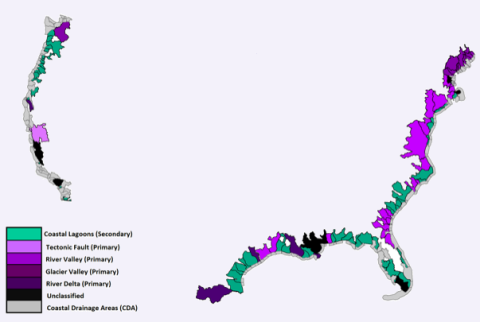Tidal Wetlands Soil Organic Carbon and Estuarine Characteristics, USA, 1972-2015
This dataset from the North American Carbon Program (NACP) provides a synthesis of soil organic carbon (SOC) estimates and a variety of other environmental information from tidal wetlands within estuaries in the conterminous United States for the period 1972-2015. Estuaries were classified by one of six categories, and coastal locations were determined by natural environmental and political divisions within the US.
Tidal wetlands contain relatively high quantities of SOC. The data were used to investigate how tidal wetland SOC density is distributed across the continental US among various coastal locations, estuarine typologies, vegetation types, water regimes, and management regimes, and to identify whether SOC density is correlated with different environmental variables.
The NACP is a multidisciplinary research program designed to improve understanding of North America's carbon sources, sinks, and stocks. The central objective is to measure and understand the sources and sinks of carbon dioxide, methane, and carbon monoxide in North America and adjacent oceans. See all ORNL DAAC data from the NACP.
Data Citation: Hinson, A.L., R.A. Feagin, and M. Eriksson. 2019. Tidal Wetlands Soil Organic Carbon and Estuarine Characteristics, USA, 1972-2015. ORNL DAAC, Oak Ridge, Tennessee, USA. https://doi.org/10.3334/ORNLDAAC/1742
Data Center: ORNL DAAC
Sponsor: EOSDIS


